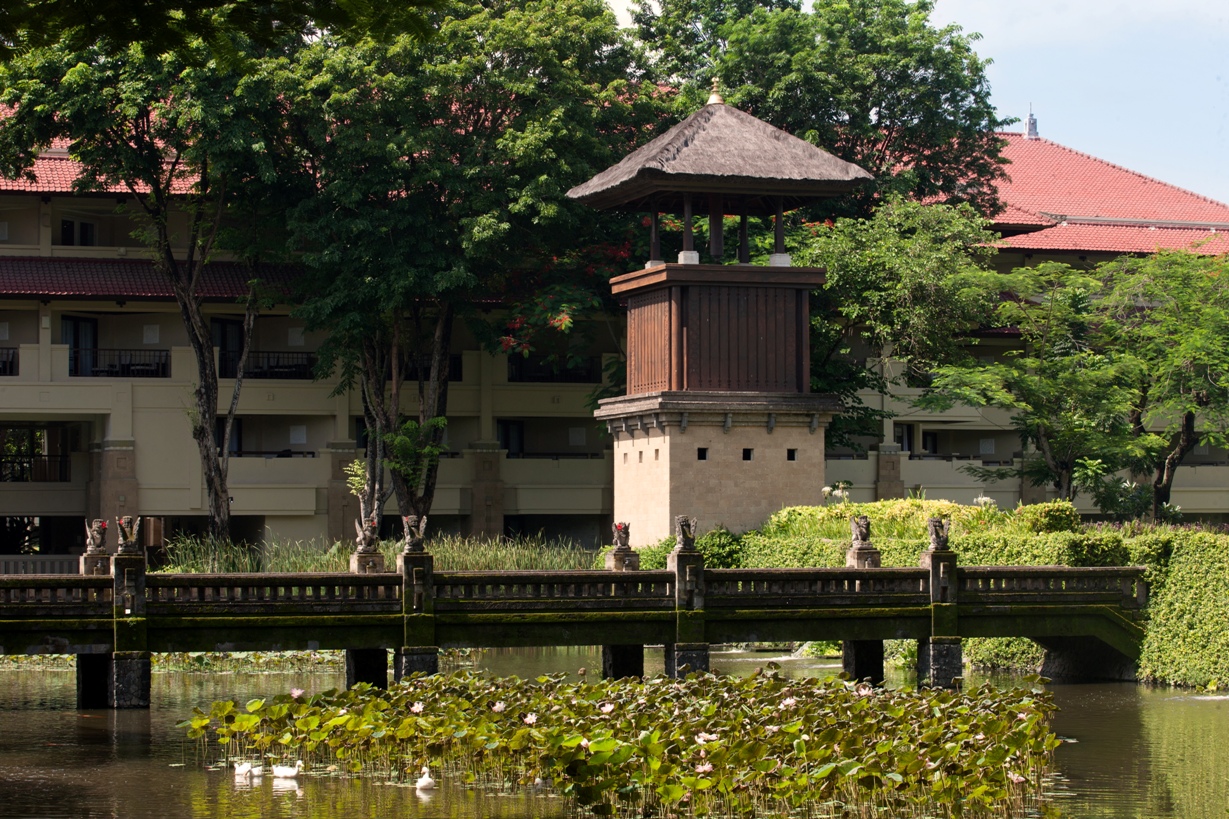THE BALINESE KUL-KUL
When you’re a guest at InterContinental Bali Resort, you might be surprised at how many elements of the Balinese culture you can find within the hotel and its gardens. A good example of this is the ‘kul-kul,’ a traditional communication system in the form of a wooden bell positioned at the top of a tower.
There are two kul-kul bell towers at InterContinental Bali Resort, the most prominent of which can be seenat the entrance, located to the left hand side when viewed from the lobby. Every kul-kul tower is a time-honoured feature of Balinese architecture, hospitality and daily life, and each of the kul-kul towers at InterContinental Bali Resort is designed to blend seamlessly with the classic architectural design of the buildings.
Inseparable from the cultural and religious life of the local communities, the kul-kul plays a significant role in the everyday lives of the Balinese Hindu people. Every village temple and every ‘banjar’ (traditional village council) has its own kul-kul, which is usually hung within an open-sided pavilion standing upon four pillars and sheltered by a roof. The split bell is crafted from selected hardwoods such as jackfruit or the wood of an orange tree. Occasionally a kul-kul might be made from bamboo but this is only for temporary use. The pavilion (locally known as the ‘bale kul-kul’ – ‘a place where the wooden bell is hung’) is often placed on a square-shaped tower constructed of sandstone and brick. From here, the sound can be heard over a wide area and will immediately attract attention.
The beat of the kul-kul in the temple indicates the start and end of formal ceremonies, while various other rhythms – referred to as ‘tabuh’ – are used by the banjar to signal different events such as the notification of a marriage or apassing, a signal for help in the case of an emergency such as a house fire, or notification of community meetings. The temple kul-kul is also used by a number of traditional Balinese organisations such as the ‘penabuh’ (gamelan musicians), ‘pecalang’ (village security) and ‘subak’ (rice farmers association), as well as some temporary organisations. The various beats must be made to sound different and typical for each organisation so that members will understand for whom the bell is being tolled. In fact, even chickens and ducks have been known to respond to the sound of the kul-kul, which might be beaten daily by the farmer, and always with the same pattern of sound, to indicate feeding time. For most events, the kul-kul is sounded in two or three rounds, starting with a slow frequency that then becomes faster, before slowing down again.
This ancient and highly effective method of communication has changed very little over the years. Despite the presence of the telephone, TV and radio, internet and mobile phones, the kul-kul is still the most effective method of making an announcement or summoning the members of a village.
InterContinental Bali Resort captures the spirit of Bali through its landscaping, architecture, interior design, artwork and guest activities. Much of the architecture, including the kul-kul towers, is based on traditional Balinese principles, utilising local materials and incorporating the essential elements of Balinese Hindu philosophy and symbolism. The artwork, meanwhile, is a fascinating collection of intricately carved statuary, bas-relief tableaux, plaques and panelsdrawn from the natural and mythical world of the Balinese heritage. Not only is this an exceptional luxury resort, it is also a platform from which guests can explore the local culture through a wide choice of activities and experiences ranging from Balinese cooking classes to gamelan music lessons, Balinese dance performances, temple visits, market and village tours, Balinese massage, traditional spa therapies, and the delicious local cuisine.

